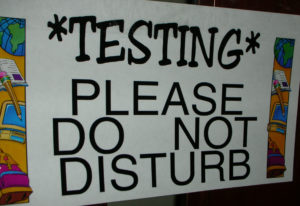 Even if you and your organization have not yet become obsessed with learning, are you noticing how learning to learn is top-of-mind for many?
Even if you and your organization have not yet become obsessed with learning, are you noticing how learning to learn is top-of-mind for many?
For example, Microsoft CEO Satya Nadella in the new book Hit Refresh: The Quest to Rediscover Microsoft’s Soul and Imagine a Better Future for Everyone explains how Microsoft has come to see the value of having a growth mindset. To support this mindset in which you believe you can develop your abilities, the CEO is trying to shift the culture away from “know-it-all” to “learn-it-all.”
Know-it-all’s face at least three big challenges in today’s VUCA (volatile, uncertain, complex and ambiguous) world:
- The volume of knowledge continues to explode.
- Knowledge, like milk, has an expiration date. It’s necessary to refresh your learning to stay up-to-date and accurate.
- Machines can store and retrieve vast amounts of data more reliably and consistently than we humans. Humans are better at adding wisdom and creating insights.
So learning how to learn for yourself, your team (or teams), and your organization is a valuable skill.
But how do you learn these days without feeling like you’re drinking from a fire hose, especially when you have so many other commitments? Besides the expansive selection of content, you also need to contend with the wide array of learning formats. The choices can be overwhelming. They range from microlearning to on-the-job experiences with peers to traditional formal degreed programs from accredited schools.
And as adults in an ever mobile, disruptive and connected world, we need to be able to recall and use what we know.
To cope, grow and develop, carefully take into account the process of learning, especially how you best learn on an individual level. The session “So Much to Learn, So Little Time” at the 2017 NeuroLeadership Summit provided me with some interesting ideas and insights, especially from Dr. Lisa Son, Associate Professor and Psychology Chair at Barnard College.
Dr. Son, who specializes in human learning, memory and metacognition, emphasized that you need to consider learning as a private process. Learning is a journey that you need to take on your own, even when you’re with other people.
When you’re learning, you bring your own emotions, expertise, experiences, skills, memories, expectations and desires for what you want to accomplish. All of these elements influence what you want to learn, how you learn, and what you will do with your learning.
You also need to figure out the best way for you and your brain to learn, and honor that. Each person’s brain is unique and what works for you may not be ideal for others. For example, some people prefer the social experience of learning in a classroom with fellow students. Others enjoy self-paced and self-directed experiences, often through MOOCs (massive open online courses) or microlearning platforms. Some people also like to seek out interactions with students from other cultures or age groups.
From a practical perspective, unless you already know your preferred learning method and style, you should do some experimenting. And keep in mind what worked for you when you were in college school may not be as effective today.
As Dr. Son spoke about the act of learning and her research, she made these points.
- Being uncertain about what you’re learning helps you learn. The uncertainty you experience helps you focus attention and direct resources toward learning.
- Individuals who are willing to learn slowly and learn from their mistakes are able to recall more, which is the hallmark of learning.
- Society today doesn’t honor “slow learners.” Instead we’re encouraging people to “Google” answers quickly, which gives us instant gratification but hurts our ability to engage in deep, meaningful learning.
Other researchers at the NeuroLeadership Summit and speakers also made these points about learning and the holy grail of recall.
- Less is more if there’s coherence. In other words, if the content is sewn together with a “golden thread” that integrates it and provides congruence, your brain will have a much easier time organizing the content which helps with recall. Otherwise, your brain gets crowded with many random facts that are difficult for you to remember, especially at a moment’s notice.
- Space your learning over time, preferably days, not hours. Recall is much more effective when you’ve had five hours of learning over five days, rather than five hours over two days. That’s because your brain has more time to organize the data, especially while you’re sleeping.
- Test yourself, even when you’re not in a formal class or microlearning experience. Testing improves recall better than restudying information, especially just rereading your notes. Even though many of us dislike testing (me included), research shows that it’s an excellent practice to maximize and sustain recall.
If you’re interested in more about the neuroscience of learning, check out my blog post To improve recall, use social learning. From there you can link to two NeuroLeadership Journal articles on the AGES model for learning. (AGES stands for attention, generation, emotions and spacing.)
Are you prepared to be a lifelong learner and be true to your best way to learn?

0 Comments